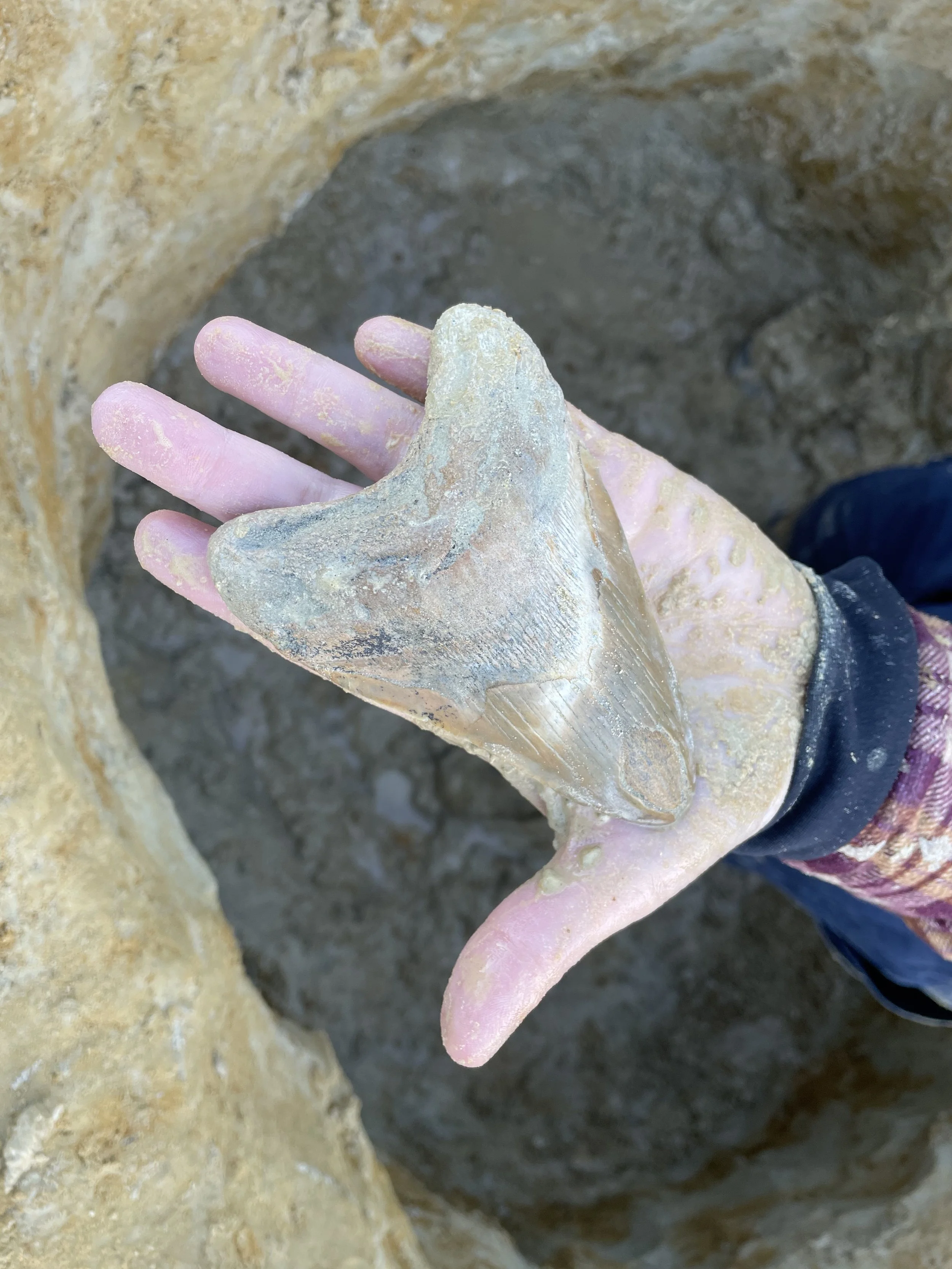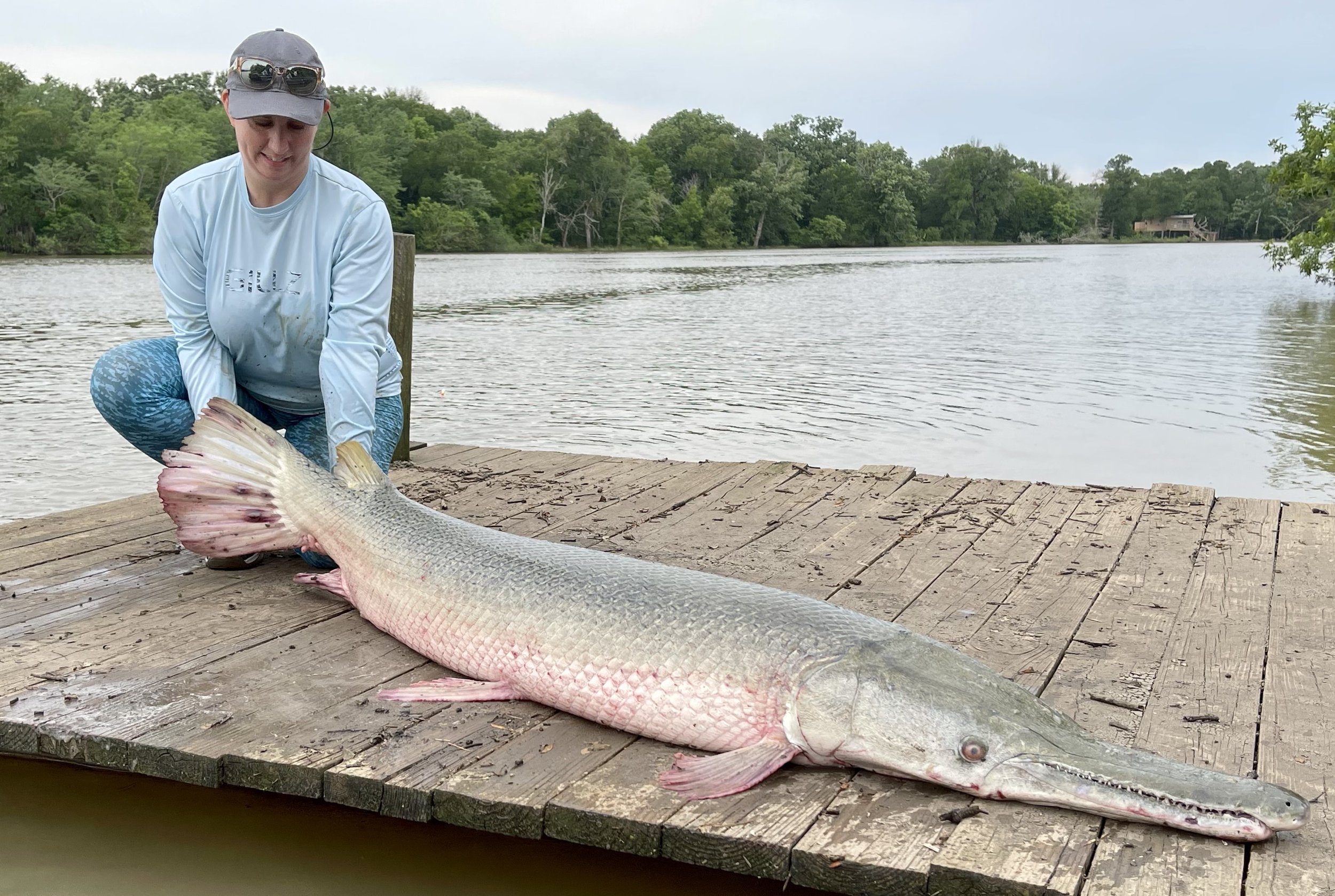The Thrill of Catching a Living Fossil
Jennifer’s megalodon tooth unearthed in Summerville.
South Carolina is a phenomenal place to hunt fossils like giant megalodon and angustiden sharks teeth, which can be found on most beaches, inland waterways, and drainage areas. In fact, one of the largest angustiden teeth found in recent years came from right here in Summerville! We have spent countless hours hunting for sharks teeth over the years. When he was a child, Jason was able to find many fossils on the banks of the Ashley River, and Jennifer found a large megalodon tooth on a dry dig in Summerville just a couple of years ago. Fossil hunting is a great family activity that proves to be just as entertaining as it is educational. As much as we enjoy hunting for fossils of species that have long been extinct, we love to catch species that are considered living fossils so we can appreciate them and marvel at how they have survived for millions of years.
South Carolina is a treasure trove of living fossils that include species of sturgeon, bowfin, and gar. The gar is a prehistoric species that can trace their ancestors back to over 240 million years ago as belonging to the Lepisosteidae family, which is the only surviving member of the Ginglymodi clade. Specifically, the longnose gar is native to South Carolina, and there are many more species of gar that can be found throughout the United States, including spotted gar, Florida gar, and shortnose gar. The granddaddy of them all is the alligator gar, which can grow up to 10 feet in length, and tip the scales at well over 200 pounds. Their head is similar in shape to an alligator (with just as many pointy teeth), and once you see one in person, it’s easy to see how they got their name. Alligator gar are found in the midwestern part of the country, and are especially prevalent in Texas where the Texas Parks and Wildlife Department is very active in studying, protecting, and educating the public on this fascinating species.
Alligator gar caught (and released) by Jennifer in Texas.
World Record longnose gar caught and released by Jason.
Back here in the Lowcountry, longnose gar like to hang out in still or slow-moving water, and often anglers will catch a gar while they are targeting something else like largemouth bass. Gar will take bait aggressively, especially if it is presented within its line of sight. We have caught longnose gar using plastic worms, spinnerbaits, crank baits, topwater, and swim baits – they are not picky! If you manage to set the hook, get ready for a fight! Much like the bowfin (their closest living relative), they will jump, dive, twist, shake, and do whatever they can to free themselves! All gar have a mouth full of razor sharp teeth, so if you’re fortunate to land it before it breaks your line, give it some time to calm down. Gar can breathe air as their swim bladders can also function as lungs. As such, they can thrive and survive in low oxygen environments and can handle being out of water a little longer than other fish. Once they’ve settled down a bit, use longnose pliers to remove the hook, and then take a minute to appreciate the fact that you are holding a living fossil. Their scales are tough and sharp and were known to be used by Native Americans as arrowheads, and don’t be startled if they take a gulp of air while out of the water.
The next time you are freshwater fishing in slow-moving waters here in the Lowcountry and you see longnose gar (and bowfin) breaking the surface of the water to get some air, don’t be surprised if you end up reeling one in! To learn more about longnose gar in South Carolina, check out SCDNR’s website. Tight Lines!


